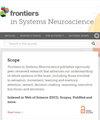A hybrid boundary element-finite element approach for solving the EEG forward problem in brain modeling
IF 3.5
4区 医学
Q2 NEUROSCIENCES
引用次数: 0
Abstract
This article introduces a hybrid BE-FE method for solving the EEG forward problem, leveraging the strengths of both the Boundary Element Method (BEM) and Finite Element Method (FEM). FEM accurately models complex and anisotropic tissue properties for realistic head geometries, while BEM excels in handling isotropic tissue regions and dipolar sources efficiently. The proposed hybrid method divides regions into homogeneous boundary element (BE) regions that include sources and heterogeneous anisotropic finite element (FE) regions. So, BEM models the brain, including dipole sources, and FEM models other head layers. Validation includes inhomogeneous isotropic/anisotropic three- and four-layer spherical head models, and a four-layer MRI-based realistic head model. Results for six dipole eccentricities and two orientations are computed using BEM, FEM, and hybrid BE-FE method. Statistical analysis, comparing error criteria of RDM and MAG, reveals notable improvements using the hybrid FE-BE method. In the spherical head model, the hybrid BE-FE method compared with FEM demonstrates enhancements of at least 1.05 and 38.31% in RDM and MAG criteria, respectively. Notably, in the anisotropic four-layer head model, improvements reach a maximum of 88.3% for RDM and 93.27% for MAG over FEM. Moreover, in the anisotropic four-layer realistic head model, the proposed hybrid method exhibits 55.4% improvement in RDM and 89.3% improvement in MAG compared to FEM. These findings underscore the proposed method is a promising approach for solving the realistic EEG forward problems, advancing neuroimaging techniques and enhancing understanding of brain function.解决脑建模中脑电图前向问题的边界元-有限元混合方法
本文介绍了一种用于解决脑电图前向问题的 BE-FE 混合方法,该方法充分利用了边界元法 (BEM) 和有限元法 (FEM) 的优势。有限元法能准确模拟现实头部几何结构中复杂的各向异性组织特性,而边界元法则能有效处理各向同性组织区域和偶极源。所提出的混合方法将区域划分为包含声源的同质边界元(BE)区域和异质各向异性有限元(FE)区域。因此,BEM 对包括偶极源在内的大脑进行建模,而 FEM 则对其他头部层进行建模。验证包括非均质各向同性/各向异性的三层和四层球形头部模型,以及基于核磁共振成像的四层真实头部模型。使用 BEM、FEM 和混合 BE-FE 方法计算了六个偶极子偏心率和两个方向的结果。统计分析比较了 RDM 和 MAG 的误差标准,发现混合 FE-BE 方法有显著改进。在球形头部模型中,与 FEM 相比,混合 BE-FE 方法的 RDM 和 MAG 标准分别提高了至少 1.05% 和 38.31%。值得注意的是,在各向异性的四层头部模型中,与 FEM 相比,RDM 和 MAG 的改进最大分别达到 88.3% 和 93.27%。此外,在各向异性的四层真实头部模型中,与 FEM 相比,所提出的混合方法在 RDM 和 MAG 方面分别提高了 55.4% 和 89.3%。这些研究结果表明,所提出的方法在解决现实脑电图前向问题、推动神经成像技术发展和加深对大脑功能的理解方面大有可为。
本文章由计算机程序翻译,如有差异,请以英文原文为准。
求助全文
约1分钟内获得全文
求助全文
来源期刊

Frontiers in Systems Neuroscience
Neuroscience-Developmental Neuroscience
CiteScore
6.00
自引率
3.30%
发文量
144
审稿时长
14 weeks
期刊介绍:
Frontiers in Systems Neuroscience publishes rigorously peer-reviewed research that advances our understanding of whole systems of the brain, including those involved in sensation, movement, learning and memory, attention, reward, decision-making, reasoning, executive functions, and emotions.
 求助内容:
求助内容: 应助结果提醒方式:
应助结果提醒方式:


